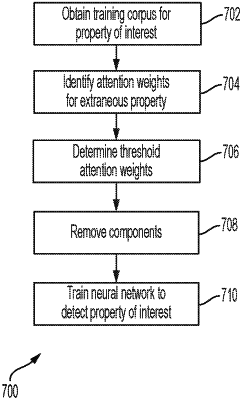| CPC G06V 10/774 (2022.01) [G06N 3/045 (2023.01); G06N 3/084 (2013.01); G06T 7/0012 (2013.01); G06V 10/764 (2022.01); G06V 10/82 (2022.01); G06T 2207/20081 (2013.01); G06T 2207/20084 (2013.01); G06T 2207/30024 (2013.01); G06T 2207/30088 (2013.01); G06T 2207/30096 (2013.01)] | 20 Claims |

|
1. A method of training a first electronic neural network classifier to identify a presence of a particular property in a novel supra-image while ignoring a spurious correlation of the presence of the particular property with a presence of an extraneous property, the method comprising:
obtaining a training corpus of a plurality of supra-images, each supra-image comprising at least one image, each image of each of the at least one image corresponding to a respective plurality of components, wherein the respective plurality of components for each image of each of the at least one image of each supra-image of the training corpus collectively form a supra-image plurality of components;
passing each respective supra-image of the plurality of supra-images of the training corpus through a second electronic neural network classifier trained to identify a presence of the extraneous property, the second electronic neural network classifier comprising an attention layer, whereby the attention layer assigns a respective attention weight to each component of the supra-image plurality of components;
identifying, for each supra-image of the plurality of supra-images of the training corpus that have a positive classification by the second electronic neural network classifier, a respective supra-image threshold attention weight, whereby each component of the supra-image plurality of components is associated with a respective supra-image threshold attention weight, wherein each individual component of the supra-image plurality of components that has a respective attention weight above its respective supra-image threshold attention weight corresponds to positive classification by the second electronic neural network classifier, and wherein each individual component of the supra-image plurality of components that has a respective attention weight below its respective supra-image threshold attention weight corresponds to negative classification by the second electronic neural network classifier;
removing components of the supra-image plurality of components that have respective attention weights above their respective supra-image threshold attention weights to obtain a scrubbed training corpus; and
training the first electronic neural network classifier to identify the presence of the particular property using the scrubbed training corpus.
|